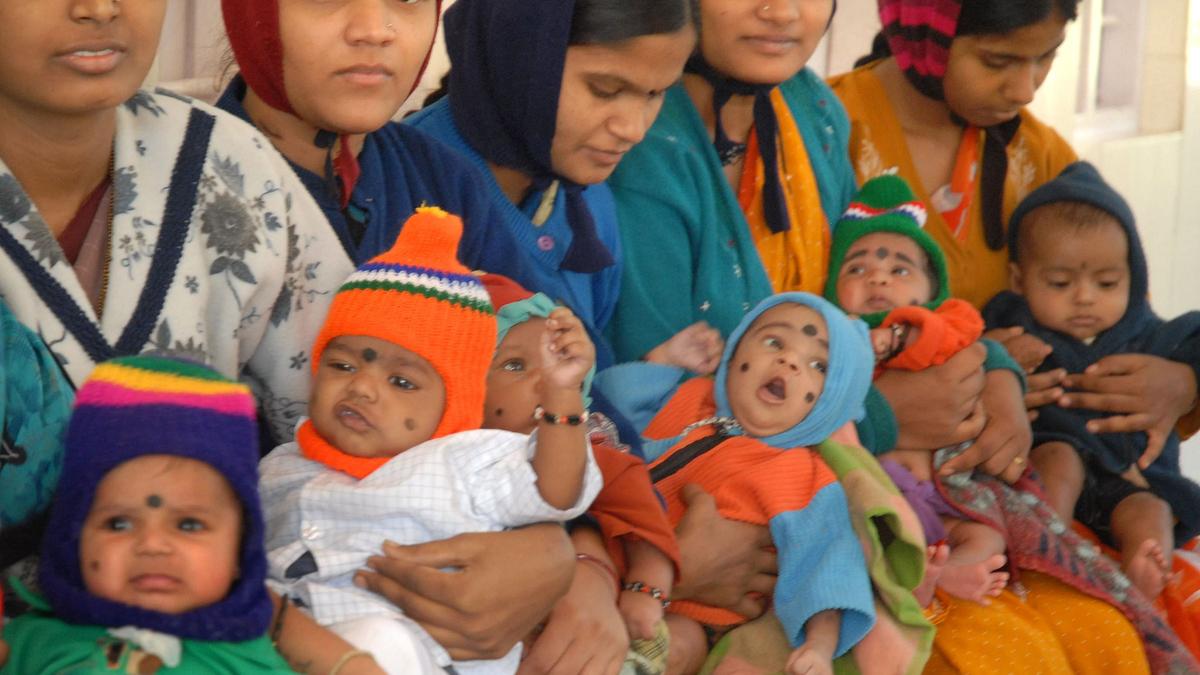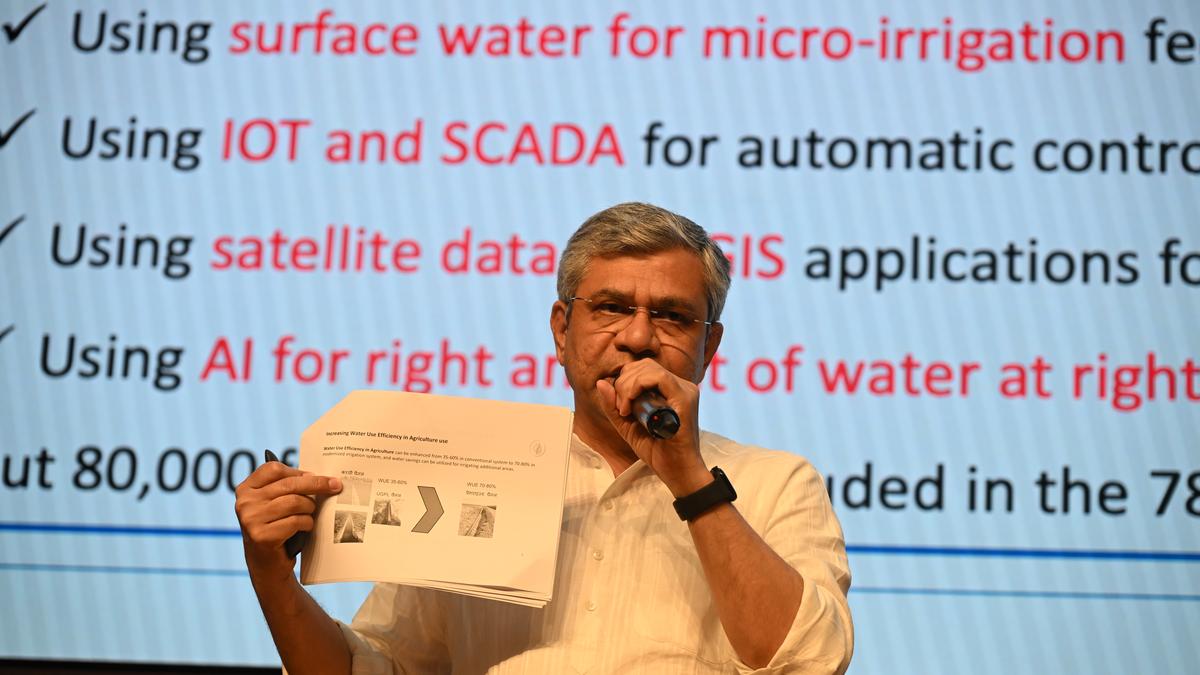Trends in Maternal Mortality 2000–2023

- 11 Apr 2025
In News:
A recent United Nations report titled ‘Trends in Maternal Mortality 2000–2023’, released by the Maternal Mortality Estimation Inter-Agency Group (MMEIG), highlights global progress and setbacks in maternal health. While acknowledging India's significant gains, the report places India second in global maternal deaths, behind Nigeria.
India’s Maternal Mortality Statistics (2023)
- Maternal deaths in India: 19,000(7.2% of global total)
- Rank: Second globally, tied with the Democratic Republic of Congo
- MMR: Reduced from 362 per 1 lakh live births (2000) to 80 in 2023 — a 78% decline
- Global average decline: 40% (2000–2023), but India achieved 86% decline
- Comparison with Nigeria:
- Nigeria: 75,000 deaths, contributing 28.7% of global maternal deaths
- India's Health Ministry deemed the comparison unfair given population differences (India: 145 crore, Nigeria: 23.26 crore)
Definition and Importance of MMR
According to WHO, Maternal Mortality Ratio (MMR) refers to:
“The death of a woman during pregnancy or within 42 days of termination, from pregnancy-related causes excluding accidental ones.”
MMR is a critical indicator for assessing healthcare quality and maternal well-being.
UN Global Findings
- Estimated maternal deaths globally (2023): 260,000
- Daily deaths: Over 700 women; about one death every two minutes
- Leading causes: Post-partum haemorrhage, hypertensive disorders, infections
- SDG 3.1 Target: Reduce MMR to <70 per 1 lakh live births by 2030
India-Specific Causes of Maternal Deaths
- Medical reasons:
- Post-partum haemorrhage
- Hypertensive disorders (e.g. pre-eclampsia)
- Infections related to pregnancy
- Co-morbidities: Anaemia, diabetes, hypertension
- Systemic challenges:
- Inadequate emergency obstetric care at Primary Health Centres (PHCs) and Community Health Centres (CHCs)
- Lack of infrastructure, trained personnel, and referral systems
- Socio-economic backwardness and poor access to healthcare in northern India
Concerns Highlighted in the Report
- Slowing progress post-2016 despite early improvements
- Humanitarian funding cuts impacting:
- Health worker retention
- Facility operations
- Availability of essential drugs (for haemorrhage, malaria, pre-eclampsia)
- Disruption in maternal care supply chains, especially in low-resource regions
India’s Stand
The Union Health Ministry has contested comparisons with smaller nations like Nigeria, asserting that India's maternal health progress is notable given its large population. The Ministry emphasized the 86% decline in MMR since 1990, as opposed to a global decline of 48% in the same period.
Accommodative Stance of Monetary Policy
- 11 Apr 2025
In News:
In its latest Monetary Policy Committee (MPC) meeting, the RBI decided to retain the accommodative stance amid signs of moderating inflation and sluggish economic growth. This was intended to support the ongoing recovery and ensure credit availability in key sectors.
Definition:
An accommodative stance is a monetary policy approach adopted by central banks, such as the Reserve Bank of India (RBI), to stimulate economic activity. It generally involves:
- Keeping interest rates low
- Injecting liquidity into the financial system
This stance signals that the central bank is open to reducing rates further or maintaining low rates for an extended period to support growth and demand.
When is it Adopted?
The RBI typically adopts an accommodative stance during:
- Slowing or below-potential economic growth
- Low or stable inflation within the RBI’s target range
- Need to revive consumption, investment, and employment
- Response to domestic or global financial shocks and uncertainties
Objectives
The main aims of an accommodative stance include:
- Boosting credit flow and private investment
- Encouraging borrowing and spending
- Supporting aggregate demand revival
- Providing liquidity relief to stressed sectors
- Promoting employment generation
Key Monetary Tools Used by RBI
To implement an accommodative stance, the RBI uses several instruments:
- Repo Rate Reduction:
- Lowers the cost of borrowing for commercial banks.
- Encourages banks to lend more to businesses and consumers.
- Open Market Operations (OMOs):RBI buys government securities to infuse liquidity into the market.
- Long-Term Repo Operations (LTROs):Provides long-term funding to banks at low interest rates.
- Cash Reserve Ratio (CRR) Adjustments:Temporarily lowering CRR increases the funds available for lending.
- Moral Suasion & Regulatory Forbearance:RBI encourages banks to maintain or enhance credit flow, especially to priority and stressed sectors.
Arctic Biome: From Carbon Sink to Carbon Source

- 11 Apr 2025
Context:
- The Arctic biome, primarily a treeless tundra, spans approximately 11.5 million km² and includes regions in Canada, Greenland, Iceland, and Eurasia.
- It is characterized by permafrost (permanently frozen ground) close to the surface, limiting plant root growth.
- Vegetation consists of grasses, lichens, mosses, and low shrubs, while fauna includes polar bears, arctic foxes, caribou, musk ox, and migratory birds like snow geese.
- Climatic conditions are harsh, with temperatures ranging from -60°C in winter to 15.5°C in summer, and annual precipitation between 150–250 mm, mostly as snow.
- Despite nutrient-poor soils, the biome has functioned as a major carbon sink by storing carbon in peat and humus.
The Arctic Boreal Zone (ABZ) and Carbon Dynamics
The Arctic Boreal Zone (ABZ), which includes tundra, coniferous forests, and wetlands, has historically played a crucial role in global carbon sequestration. Its coniferous forests form the largest land-based biome on Earth.
However, recent studies, including one in Nature Climate Change (2025), indicate that over 30% of the ABZ has shifted from being a carbon sink to a carbon source. This reversal is primarily driven by:
- Permafrost thawing: Warmer topsoil temperatures lead to decomposition of organic matter, releasing CO? and methane.
- Frequent and intense wildfires: These burn organic-rich soils, releasing large volumes of carbon.
This transition creates a positive feedback loop: Wildfires release carbon → global temperatures rise → permafrost thaws → more emissions → more fires.
Fire Trends and Global Impact
Data from the Copernicus Atmosphere Monitoring Service (CAMS) reveal that wildfires released 800,000 tonnes of carbon in January 2025 alone, nearly 4 times more than in the same period a decade ago.
Key wildfire incidents include:
- Texas and Oklahoma (USA): Destroyed 14,000+ structures, burned 16,000 hectares, and displaced thousands.
- Ofunato City (Japan): One of the country’s largest fires in 50 years, affecting nearly 2,900 hectares.
According to the India State of Forest Report (Dec 2024):
- Uttarakhand recorded the highest number of forest fires (5,315 fires) between Nov 2022–June 2023.
- However, fire hotspots are declining: 2.23 lakh (2021–22) → 2.12 lakh (2022–23) → 2.03 lakh (2023–24).
India’s Changing Fire and Climate Profile
Research by IIT Kharagpur and the Indian Institute of Tropical Meteorology shows that land temperatures in northwest, northeast, and central India are rising by:
- 0.1–0.3°C/decade (pre-monsoon)
- 0.2–0.4°C/decade (post-monsoon)
This trend has led to earlier, longer, and slower-moving heatwaves, increasing wildfire vulnerability. India emits an estimated 69 million tonnes of CO? annually from forest fires.
Key Findings from the 2024 Arctic Report Card (NOAA)
The U.S. National Oceanic and Atmospheric Administration (NOAA) confirms that the Arctic tundra is becoming a carbon source, exacerbated by fossil fuel pollution and recurrent wildfires. According to NOAA, this shift reflects persistent, long-term climate trends, not mere variability.
A global study of 200 monitoring sites (1990–2020) found:
- Alaska contributed 44% of the ABZ’s new carbon emissions.
- Northern Europe and Siberia added 25% and 13%, respectively.
- Non-summer months now emit more carbon than the entire summer absorption.
Historical fire events like the 2003 Siberian fires and the 2012 Timmins fire (Canada) significantly accelerated this trend.
M-CADWM Scheme

- 11 Apr 2025
In News:
The Union Cabinet has approved the Modernisation of Command Area Development and Water Management (M-CADWM) scheme as a sub-scheme of the Pradhan Mantri Krishi Sinchayee Yojana (PMKSY). The scheme will be implemented during 2025–26 with an initial outlay of ?1,600 crore.
Background
- PMKSY was launched in 2015-16 to expand the cultivable area under assured irrigation, improve on-farm water use efficiency, and enhance access to water at the farm level.
- The Command Area Development and Water Management (CAD&WM)programme was first initiated in 1974-75, and restructured in 2004. It has been implemented under PMKSY - Har Khet Ko Pani since 2015-16.
Objectives of M-CADWM
- Modernize the irrigation water supply network to ensure efficient delivery from existing canals or other sources to farming clusters.
- Enhance Water Use Efficiency (WUE) and promote sustainable agricultural practices.
Key Features
- Technological Integration:Adoption of SCADA (Supervisory Control and Data Acquisition) and Internet of Things (IoT) for real-time water accounting and monitoring.
- Infrastructure Development:Installation of underground pressurised piped irrigation systems up to 1 hectare per farm, supporting micro-irrigation from source to farm gate.
- Sustainable Water Management:
- Implementation of Irrigation Management Transfer (IMT) to Water User Societies (WUS).
- These societies will be supported for five years and linked with Farmer Producer Organisations (FPOs) and Primary Agricultural Cooperative Societies (PACS) to strengthen local management.
- Youth Engagement:The scheme aims to attract youth to agriculture by promoting the use of modern irrigation technologies and creating opportunities in agrarian entrepreneurship.
Components of CAD&WM (Under PMKSY)
- Structural Interventions:On-Farm Development (OFD) works, construction of field, intermediate and link drains.
- Non-Structural Interventions:One-time functional grants to registered Water Users’ Associations (WUAs), capacity building, demonstrations, and adaptive trials to promote efficient water use.
Expected Outcomes
- Improved irrigation efficiency and agricultural productivity.
- Enhanced water conservation and equity in water distribution.
- Strengthened community participation in irrigation management.
- Boost to rural employment and agriculture modernization.
Cafe Rista
- 11 Apr 2025
In News:
The Uttar Pradesh Police has taken a unique step to humanize policing and strengthen community engagement through the launch of Cafe Rista—a public-friendly café located within the Noida Police Commissionerate, Sector 108. This initiative is an example of citizen-centric policing aimed at improving the image of law enforcement and promoting positive interactions with the public.
Key Highlights:
- Launched by:The café is the brainchild of IPS officers Laxmi Singh and Babloo Kumar, with active public outreach by IPS Preeti Yadav, who brought attention to the initiative through a viral social media video.
- What is Cafe Rista?
It is a pastel-themed, aesthetically pleasing café designed to serve affordable, hygienic, and tasty meals to both civilians and police personnel. The ambiance is warm and welcoming, featuring quirky motivational quotes and a calming decor.
- Strategic Location:The café is situated close to the Family Dispute Resolution Clinic within the Commissionerate. This proximity serves a dual purpose:
- It offers a space of relaxation for families and individuals undergoing counselling or dispute mediation.
- It provides psychological respite for those visiting under stressful circumstances.
Objectives of the Initiative:
- Break Stereotypes:Challenge the conventional perception of the police as unapproachable or intimidating by creating an informal and friendly setting.
- Promote Informal Engagement:Encourage dialogue and trust-building between civilians and police personnel in a relaxed, non-threatening environment.
- Support Mental Well-Being:The café contributes to the morale and mental wellness of both the public and police officers, especially those on demanding duties.
- Welfare Policing Model:Aligns with the concept of "welfare policing", wherein the police function not only as enforcers of law but also as community caretakers.
- Public Outreach through Social Media:The initiative leverages platforms like Instagram and Twitter to showcase the human side of policing, creating transparency and relatability.
